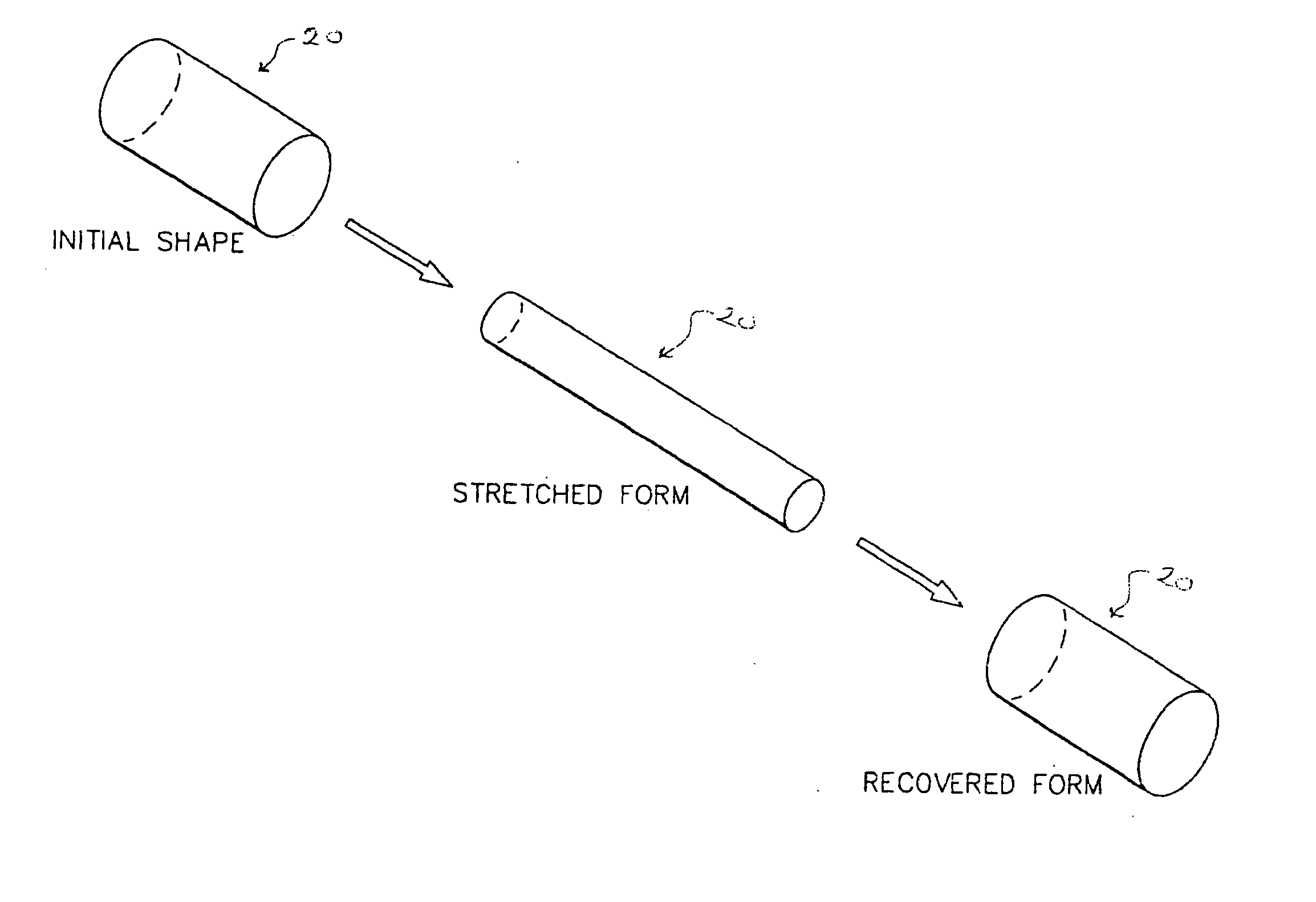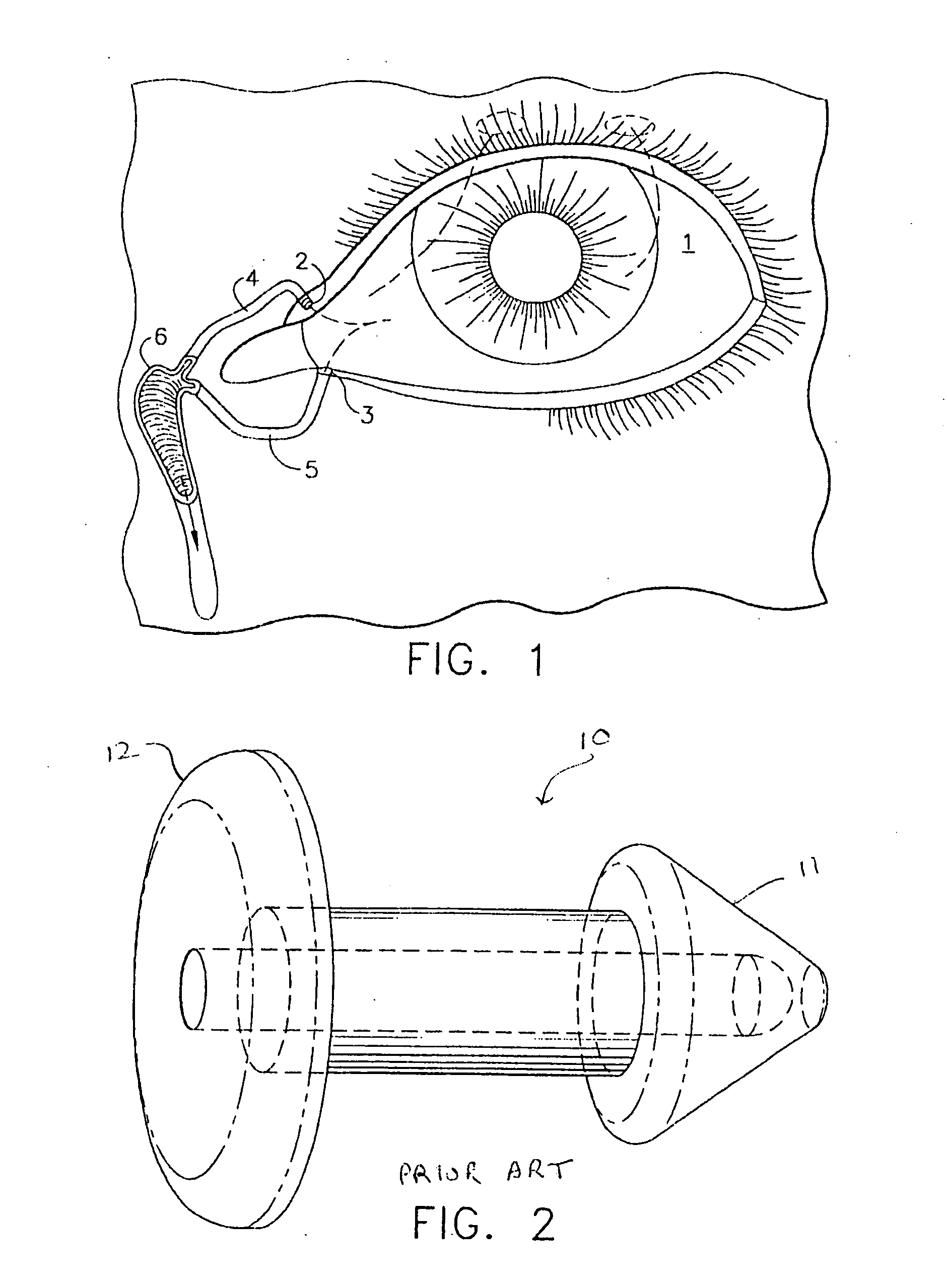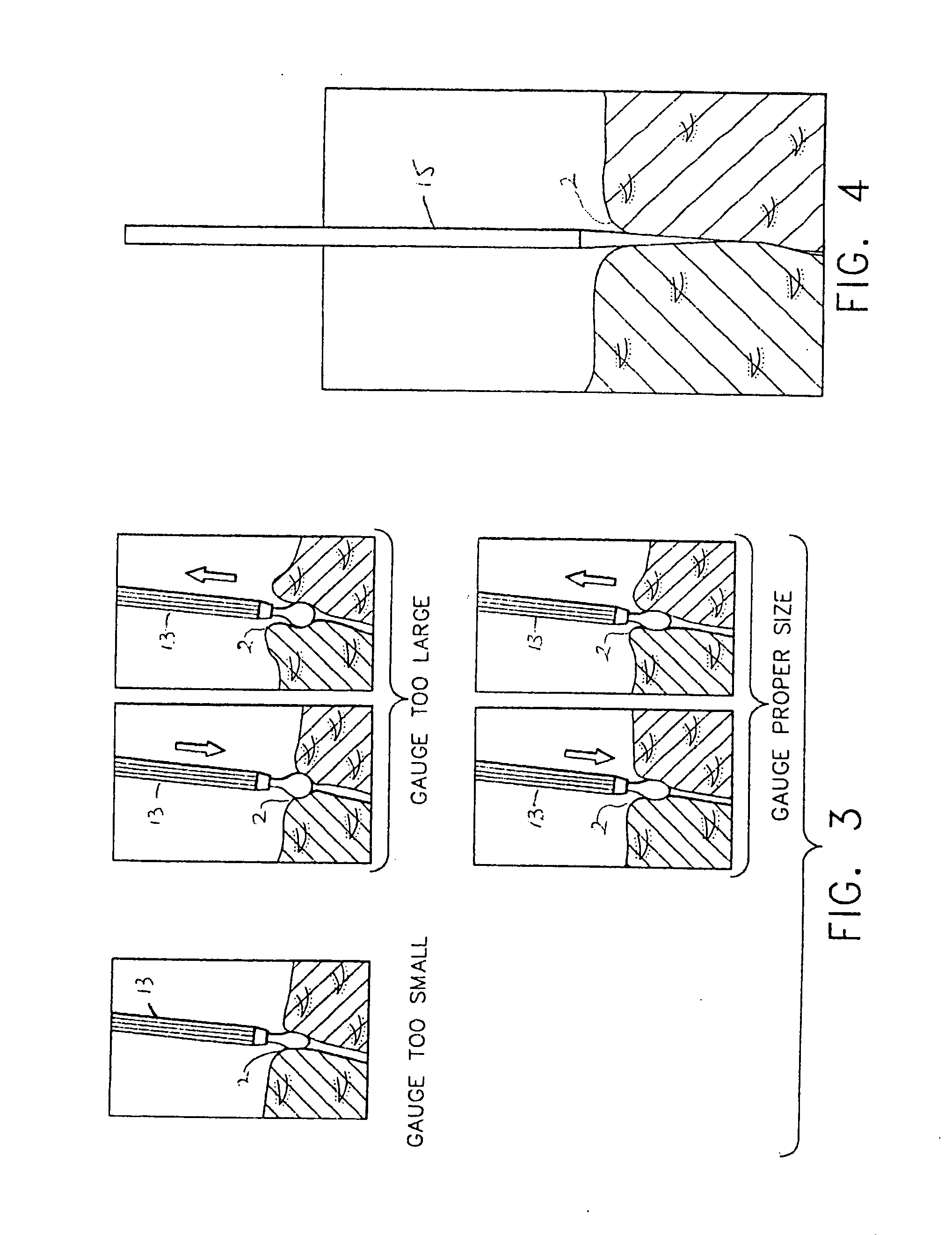Ocular occluder and method of insertion
a technology which is applied in the field of ocular occluder and insertion method, can solve the problems of one-size-fits-all design and requires a much smaller inventory for both manufacturers and service providers, and achieve the effect of saving time for doctors and reducing inventory
- Summary
- Abstract
- Description
- Claims
- Application Information
AI Technical Summary
Benefits of technology
Problems solved by technology
Method used
Image
Examples
example 1
[0030] A mixture of 5 grams 2-hydroxyethyl methacrylate and 10 mg benzoyl peroxide is mixed, degassed and refilled with nitrogen gas three times. The mixture is then transferred to a polypropylene tube having one end thermally pre-sealed. The second end is sealed after the mixture is transferred into the tube. The tube is placed in a preheated oven at a temperature of about 90° C. for 15 hours, then at about 135° C. for 3 hours. The polypropylene tube is cut open and a transparent rigid rod is obtained.
[0031] The rod obtained above has a diameter of about 1.2 mm and a length of about 25 mm. The rod is heated on a heating plate until it is soft and elastic. The softened rod is manually stretched by holding both of its ends with forceps. The stretched rod is cooled to room temperature, whereby it became rigid and remains in the stretched form when the forceps were released. The cooling process may be accelerated by dipping the stretched rod into room temperature water. This “freezes”...
examples 2-4
[0036] Examples 2-4 are prepared in the same manner as described in Example 1 except for the material compositions. Table 1 lists material composition as well as other properties.
TABLE 1Example1234Composition*HEMAHEMA +HEMA +HEMA + 20%0.2% XL20% MMAMMA + 0.2% XLH2O % 39%36% 23% 23%Diameter in1.41.41.31.3mm (wet)Elongation %100%45%200%170%
*10 mg of benzoyl peroxide was used as an initiator in all compositions
HEMA: hydroxyethyl methacrylate
XL: ethylene glycol dimethacrylate used as a crosslinker
Composition percentage based on weight percentage
example 5
[0037] A composition of 70 wt. % hydroxyethyl methacrylate, 25 wt. % N-benzyl-N-methylacrylate and 5% N,N-dimethylacrylate is polymerized with 90.2 wt. % ethylene glycol dimethacrylate as a crosslinker, and 10 mg benzoyl peroxide as an initiator, under the same conditions as that in Example 1. The resulting material includes 20 wt. % water when fully hydrated and elongation of about 20%.
[0038] The compositions of Examples 2-5 may be formed into ocular occluders of the present invention using, for example, the procedure described in Example 1.
PUM
 Login to View More
Login to View More Abstract
Description
Claims
Application Information
 Login to View More
Login to View More - R&D
- Intellectual Property
- Life Sciences
- Materials
- Tech Scout
- Unparalleled Data Quality
- Higher Quality Content
- 60% Fewer Hallucinations
Browse by: Latest US Patents, China's latest patents, Technical Efficacy Thesaurus, Application Domain, Technology Topic, Popular Technical Reports.
© 2025 PatSnap. All rights reserved.Legal|Privacy policy|Modern Slavery Act Transparency Statement|Sitemap|About US| Contact US: help@patsnap.com



